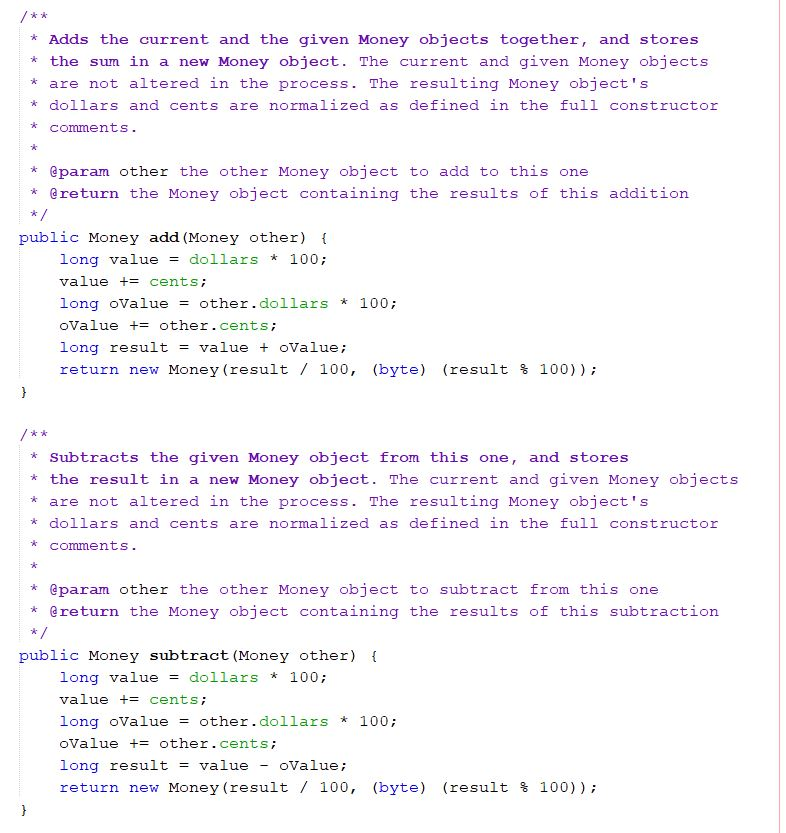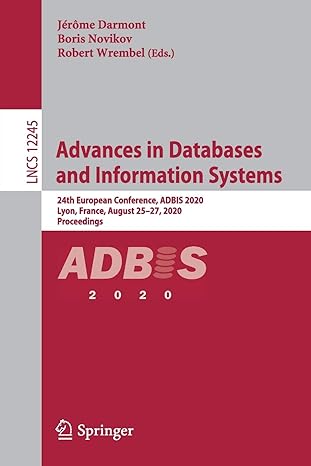Answered step by step
Verified Expert Solution
Question
1 Approved Answer
How would we write the body of the toString() methods using printf statements? Language: Java / * * * Provides a string representation of the



How would we write the body of the toString() methods using printf statements?
Language: Java
/ * * * Provides a string representation of the current Money object, in * the form $mm.mm. Negative values have a minus sign before the dollar * sign. Zero dollar amounts are represented with one zero between the * dollar sign and the decimal point. Cents that are multiples of 10 * still show two decimal places. (Examples: $12.34, -$6.50, $0.99, * -$0.99, $0.00) * @return the string representation @Override public String toString() { return null; /** * Default constructor. Creates a new Money object. * Sets both dollars and cents to zero. public Money () { dollars = 0; cents = 0; * Full constructor. Creates a new Money object. Dollars and cents * are normalized. If one is negative and the other is * positive, the resulting object will be the natural addition of the two * values. (Example: 2 dollars and -5 cents is converted to i dollar * and 95 cents.) If the absolute value of cents is greater than 99, * the resulting object will carry the extra cents into the dollars. * (Example: 1 dollar and 105 cents is converted to 2 dollars and 5 cents.) * A negative value is represented with both the dollars and cents negative. * @param dollars the number of dollars in the amount @param cents the number of cents in the amount public Money (long dollars, byte cents) { long value = dollars * 100; value += cents; this.dollars = value / 100; this.cents = (byte) (value $ 100); * Provides access to the dollars portion of the monetary value. * @return the dollars portion of this Money object public long getDollars () { return dollars; /** * Provides access to the cents portion of the monetary value. * @return the cents portion of this money object */ public byte getCents() { return cents; * Adds the current and the given Money objects together, and stores * the sum in a new Money object. The current and given Money objects * are not altered in the process. The resulting Money object's * dollars and cents are normalized as defined in the full constructor comments. * @param other the other Money object to add to this one * @return the Money object containing the results of this addition */ public Money add (Money other) { long value = dollars * 100; value += cents; long Value = other. dollars * 100; Value += other.cents; long result = value + Value; return new Money (result / 100, (byte) (result $ 100)); * Subtracts the given Money object from this one, and stores * the result in a new Money object. The current and given Money objects * are not altered in the process. The resulting Money object's * dollars and cents are normalized as defined in the full constructor comments. * @param other the other Money object to subtract from this one * @return the Money object containing the results of this subtraction */ public Money subtract (Money other) { long value = dollars * 100; value += cents; long Value = other.dollars * 100; oValue += other.cents; long result = value - oValue; return new Money (result / 100, (byte) (result $ 100))Step by Step Solution
There are 3 Steps involved in it
Step: 1

Get Instant Access to Expert-Tailored Solutions
See step-by-step solutions with expert insights and AI powered tools for academic success
Step: 2

Step: 3

Ace Your Homework with AI
Get the answers you need in no time with our AI-driven, step-by-step assistance
Get Started


